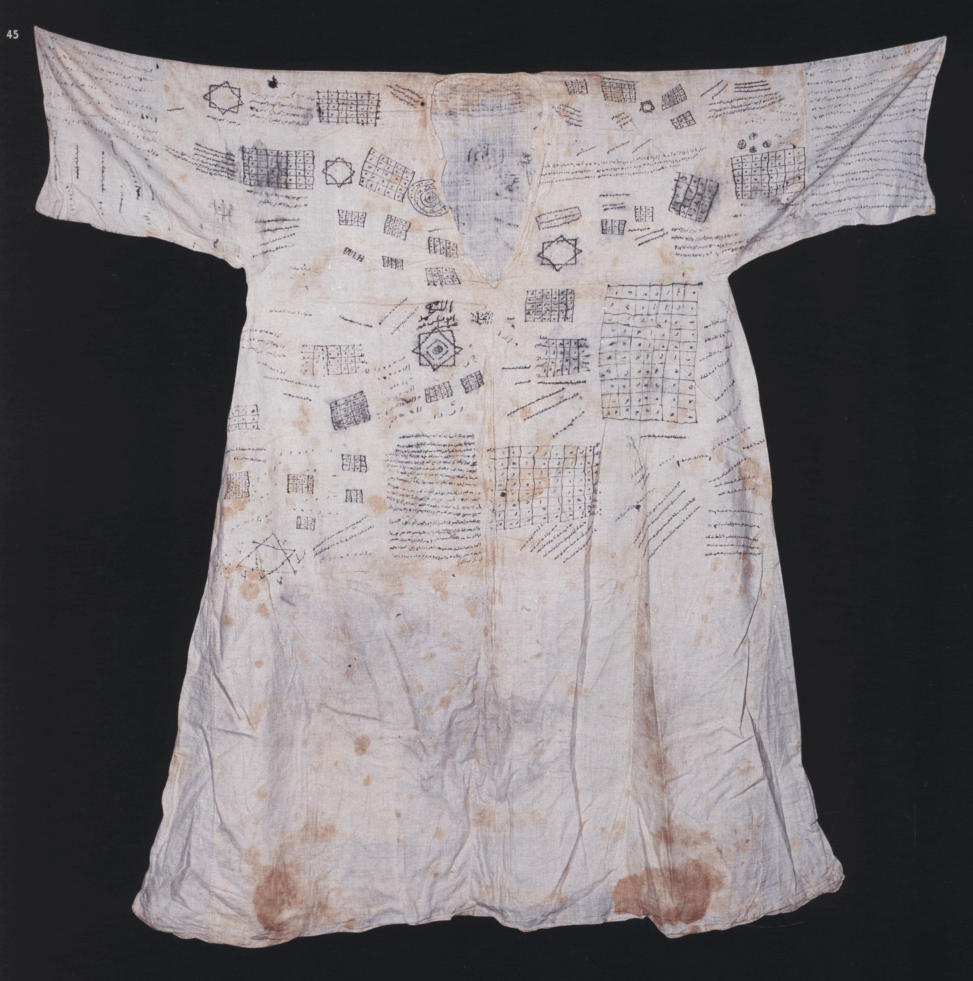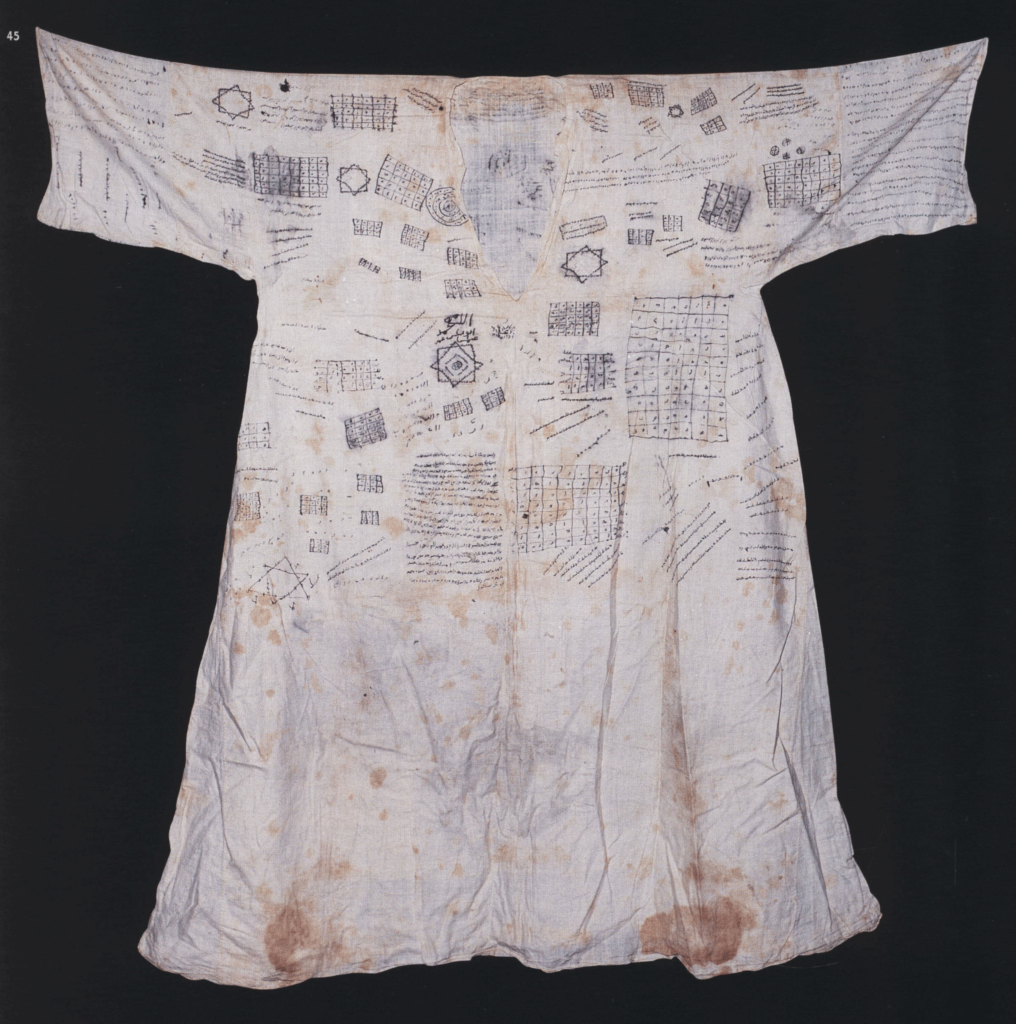Aziz Mahmud Hüdai, one of the most famous saints of the Ottoman Empire, was born in 1541 and died in 1648. Some of his clothes, including three hırkas (dervish overgarments) and a long talismanic (tilsimli) gömlek inscribed with mystical formulae, were preserved.
Fabric: White cotton cloth. The original source isn’t more forthcoming than that: “Beyaz pamuklu bezden.”
Construction Details: The body of the gömlek is cut from a wide length of cotton, with the seams falling about 2/5ths of the way down the sleeves. The skirts are cut in an A-line from the armpits, with vertical seams in line with the sleeve seams. This layout method is the same one used with the backs of the extant kaftans: Center the shape of the garment on the fabric, cut it out, and fill in the missing bits at the edges with waste fabric.
There are no underarm gussets. A wedge has been sewn into the armpit of the left sleeve, but it appears to be a mend rather than a gusset.
The sleeves are short, and the ends are slightly concave.
The collar isn’t cut into the rear panel at all, which is the standard cut for extant overgarments. The front slit is deep, but not as generous as the slits seen in paintings by Turkish artists.
Source: Nurhan Atasoy. Derviş Çeyizi: Türkiye’de Tarikat Giyim-Kuşam Tarihi. T.C. Kültür Bakanlığı, 2000, p. 45
Date: First half of the 16th century (my personal guess)


Urtatim
tilsimli gömlek – talismanic – made by the saint himself, and very unlike the carefully constructed painted, gilded, and calligraphied tilsimli gömlekler of the Sultans
Me
Yes! This looks like, for want of a better word, a working talismanic gömlek. Aziz Mahmud Hüdai must have added to it as the occasion or his needs called for it, using whatever space was available.
Thanks for the correct term! I’ll edit the entry.
— Issendai